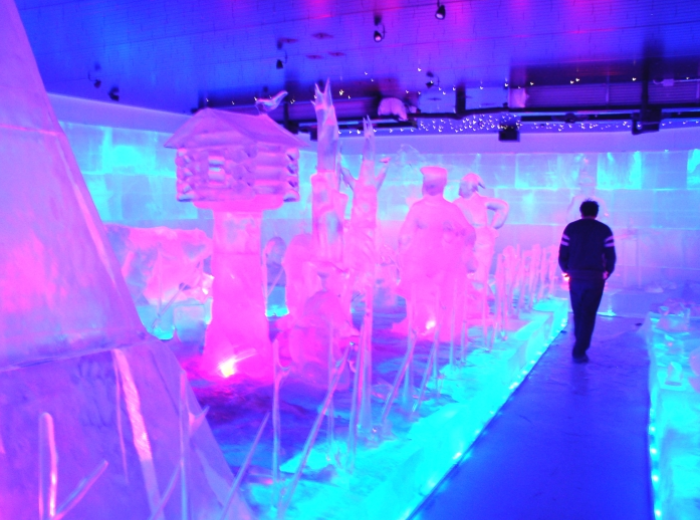Did you know what a Christmas village has to do with UV radiation?

A Christmas theme park in Scandinavia opens its doors to many visitors every year during Christmas season. Featured attractions include an ice gallery, where you can admire various animals carved out of ice. During the rest of the year, the premises are closed.
Due to the damp and wet rooms, mold spores and unpleasant odors are very often formed. Special UV lamps from Heraeus Noblelight can help to combat this problem.
The physical method of UV radiation is an economical and environmentally friendly alternative to chemical processes. By using special Heraeus UV lamps, ozone is generated from the atmospheric oxygen of the ambient air. For this purpose, the emitted radiation of wavelength 185 nm is used. The radiation at the longer wavelength of 254nm photolyzes the ozone into excited oxygen, which oxidizes the long chain molecules. That way, mold can be killed and unpleasant mold odors are broken down.
The ultraviolet radiation covers the wavelength range from 100 to 380 nm. The disinfection with UV low- pressure lamps uses the wavelength in the UVC range of 254 nm, the ozone production the wavelength 185 nm.
Click here to find out more about the UV oxidation process.
Heraeus Noblelight GmbH
Heraeusstr. 12-14
D-63450 Hanau
Phone +49 6181 35 8547
Fax +49 6181 35 16 8547
E-Mail: hng-info@heraeus.com
Media Contact
All latest news from the category: Power and Electrical Engineering
This topic covers issues related to energy generation, conversion, transportation and consumption and how the industry is addressing the challenge of energy efficiency in general.
innovations-report provides in-depth and informative reports and articles on subjects ranging from wind energy, fuel cell technology, solar energy, geothermal energy, petroleum, gas, nuclear engineering, alternative energy and energy efficiency to fusion, hydrogen and superconductor technologies.
Newest articles

A universal framework for spatial biology
SpatialData is a freely accessible tool to unify and integrate data from different omics technologies accounting for spatial information, which can provide holistic insights into health and disease. Biological processes…

How complex biological processes arise
A $20 million grant from the U.S. National Science Foundation (NSF) will support the establishment and operation of the National Synthesis Center for Emergence in the Molecular and Cellular Sciences (NCEMS) at…

Airborne single-photon lidar system achieves high-resolution 3D imaging
Compact, low-power system opens doors for photon-efficient drone and satellite-based environmental monitoring and mapping. Researchers have developed a compact and lightweight single-photon airborne lidar system that can acquire high-resolution 3D…





















